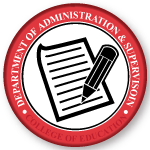Date of Award
7-2024
Degree Type
Dissertation
Degree Name
Doctor of Education (EdD)
Department
Educational Administration and Supervision
First Advisor
Dr. C. Elliott Ostler
Abstract
Teachers are the backbone of our education system and are often overlooked sources of information within the education system itself. It’s critical to find the most up-to-date teaching practices and combine those practices by gaining insight from these teachers to ensure student success. Today, in the modern United States education system, teachers face many unique challenges in regard to their student population. The diversity within one classroom is so unique but can be challenging for teachers to address (Tomlinson, 2015). A practical method of addressing the needs of diverse populations that gives all diverse learners equal access to learning is differentiated instruction (Ford, 2019). Differentiated instruction itself allows each teacher to build a relationship with each of their students and be creative and unique with each student within their classrooms. Differentiated instruction gives the teacher the ability to meet student needs through four unique ways: Content- The information and ideas (Tomlinson, 2014). The knowledge, understanding, and skills we want students to learn (Tomlinson, 2023). The content itself includes the curriculum, the material being taught. Process- How students come to understand or make sense of the content (Tomlinson, 2023). Product- How students demonstrate what they have come to know, understand, and are able to do after an extended period of learning (Tomlinson, 2023). Affect/Environment- The climate and structure of the classroom (Tomlinson, 2014). Also, how students’ emotions and feelings impact their learning (Tomlinson, 2023). This study will look to analyze key characteristics that educators deem valuable in the education process in order to differentiate instruction. This study will include both teachers as well as administrators to understand if their perceptions of differentiation currently align. This study will also look at years of experience to see if perceptions of differentiation change as teachers become more experienced within the classroom. Tomlinson believes that all students fall under four categories of learners, participants will identify valuable characteristics for each category of learner. The four categories of learners include Advanced Learners, Struggling Learners, ELL, and Students in The Middle. These populations of students are pulled from the work of Dr. Tomlinson (2017).
Recommended Citation
Kubicek, Landon, "EXPLORING FACTORS OF DIFFERENTIATION" (2024). Educational Leadership Theses, Dissertations, and Student Creative Activity. 54.
https://digitalcommons.unomaha.edu/edleadstudent/54
Files over 3MB may be slow to open. For best results, right-click and select "save as..."


Comments
The author holds the copyright to this work, any reuse or permissions must be obtained from the author directly.